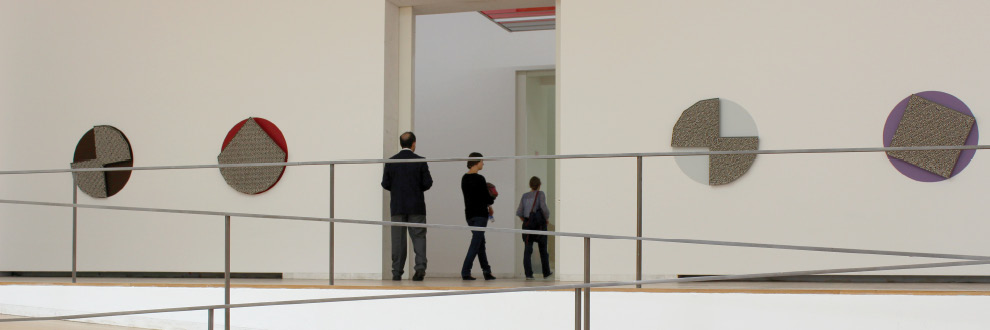Works from the Serralves Collection
from 23 SEP 2014 to 19 OCT 2014
Liam Gillick, Charlotte Posenenske, Haegue Yang, Amalia Pica
The works presented in this gallery use abstraction to evoke ideas of collectivity and participation, and as a means to propose alternative modes of perception. In each work, the idea of a singular viewpoint is replaced by multiple perspectives that are historical and cultural, as well as visual. Liam Gillick’s Research Platform (2005) alludes to modernist design and minimal art and to past models of rational efficiency characteristic of twentieth-century corporate industries, to speculate on possible forms of collective thinking. Charlotte Posenenske’s Prototype Series B Relief (1967) enables interaction with the surrounding architecture and the viewer. The artist does not predetermine how the various elements of her sculptures may be combined, leaving that decision to others. Haegue Yang invites spectators to become players and at the same time producers of unpredictable soundscapes with her Rotating Geometries (2013).Amalia Pica’s A ? B ? C (line) (2013) proposes abstraction as a set of improvised tableaux produced in real time before an audience — otherwise abstract geometrical forms become elements in a performative conversation. The work becomes the enactment of forms of compromise or collaboration, a geometric representation of collectivity brought to life by bodies moving in space.
Exclusive Sponsor of The Museum Project "Serralves - Património Classificado" co-financed by
The works presented in this gallery use abstraction to evoke ideas of collectivity and participation, and as a means to propose alternative modes of perception. In each work, the idea of a singular viewpoint is replaced by multiple perspectives that are historical and cultural, as well as visual. Liam Gillick’s Research Platform (2005) alludes to modernist design and minimal art and to past models of rational efficiency characteristic of twentieth-century corporate industries, to speculate on possible forms of collective thinking. Charlotte Posenenske’s Prototype Series B Relief (1967) enables interaction with the surrounding architecture and the viewer. The artist does not predetermine how the various elements of her sculptures may be combined, leaving that decision to others. Haegue Yang invites spectators to become players and at the same time producers of unpredictable soundscapes with her Rotating Geometries (2013).Amalia Pica’s A ? B ? C (line) (2013) proposes abstraction as a set of improvised tableaux produced in real time before an audience — otherwise abstract geometrical forms become elements in a performative conversation. The work becomes the enactment of forms of compromise or collaboration, a geometric representation of collectivity brought to life by bodies moving in space.
Exclusive Sponsor of The Museum Project "Serralves - Património Classificado" co-financed by

